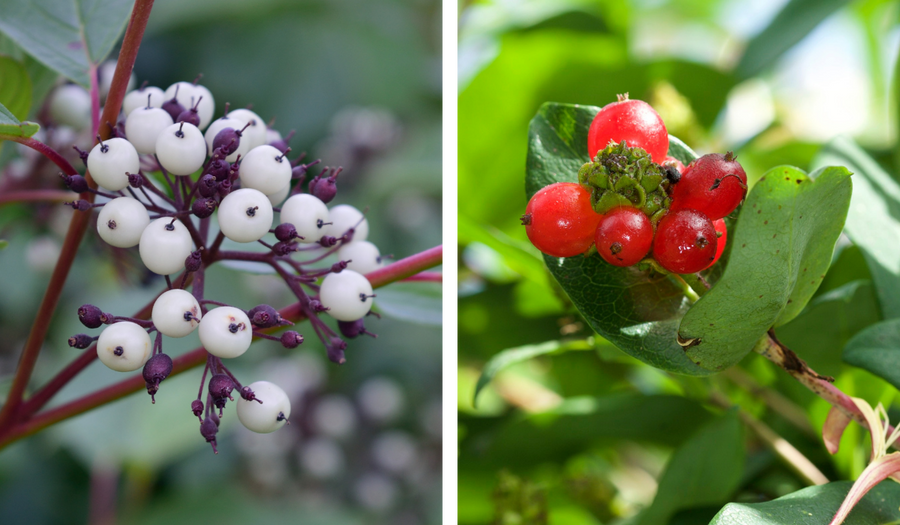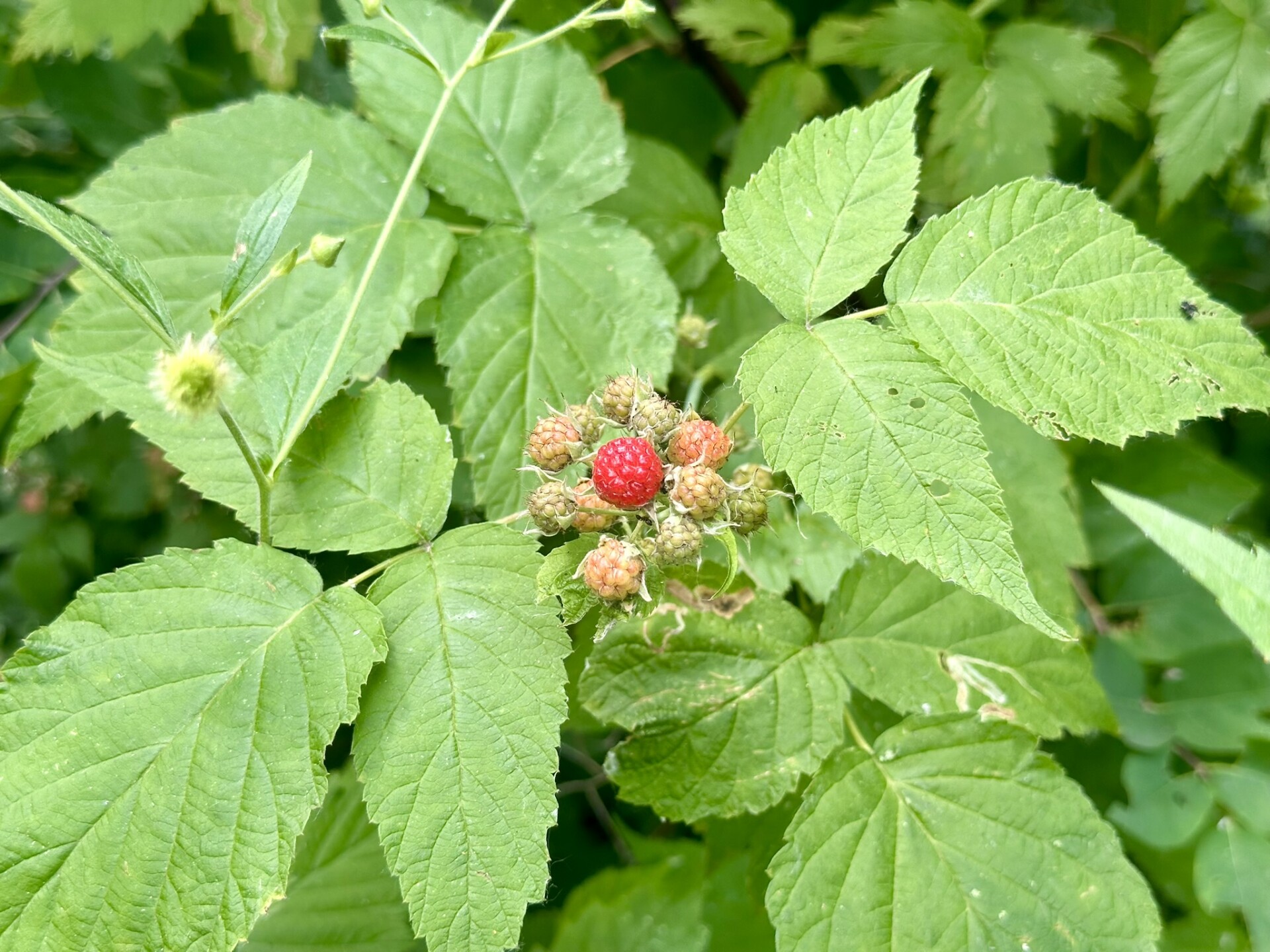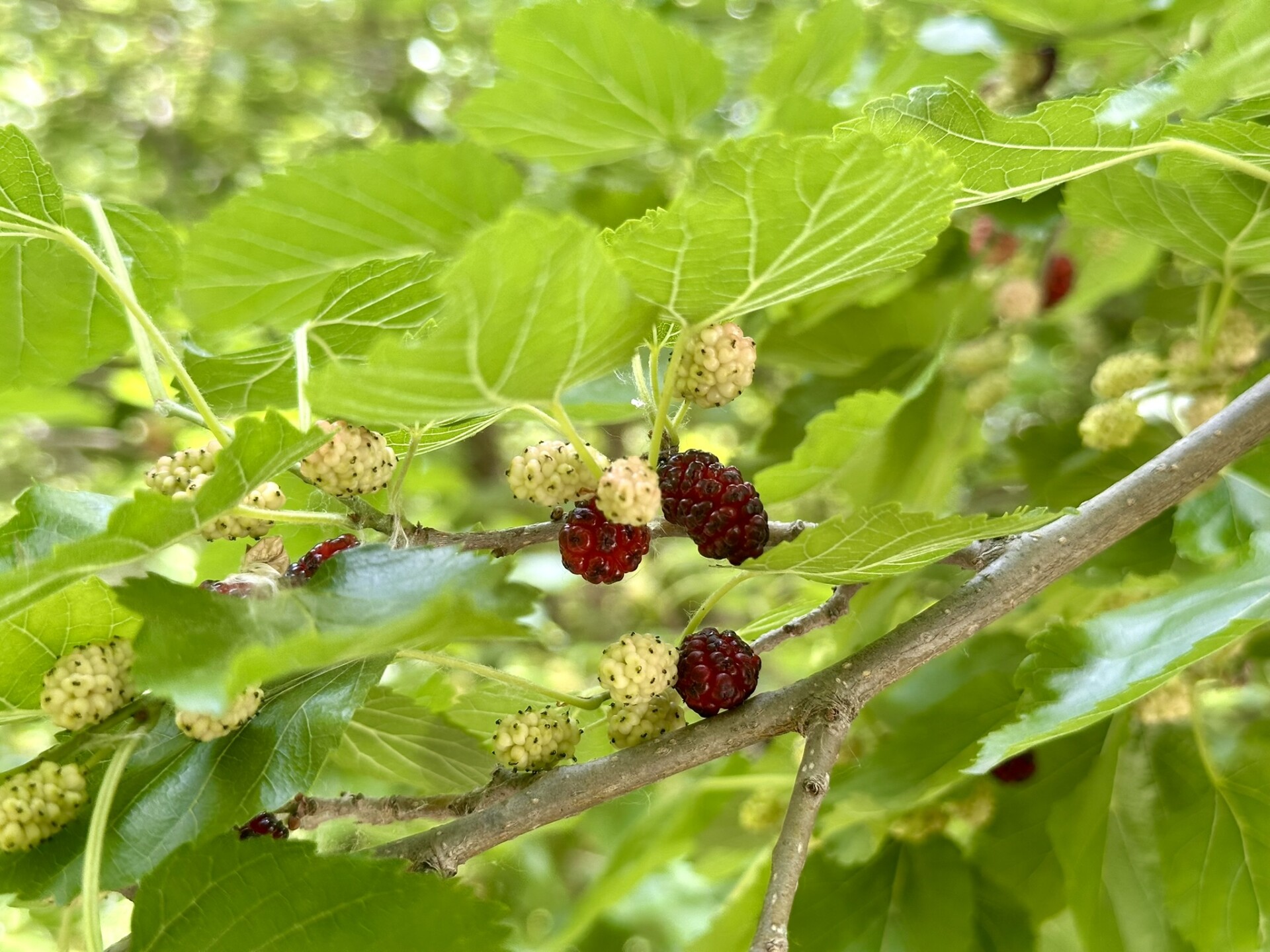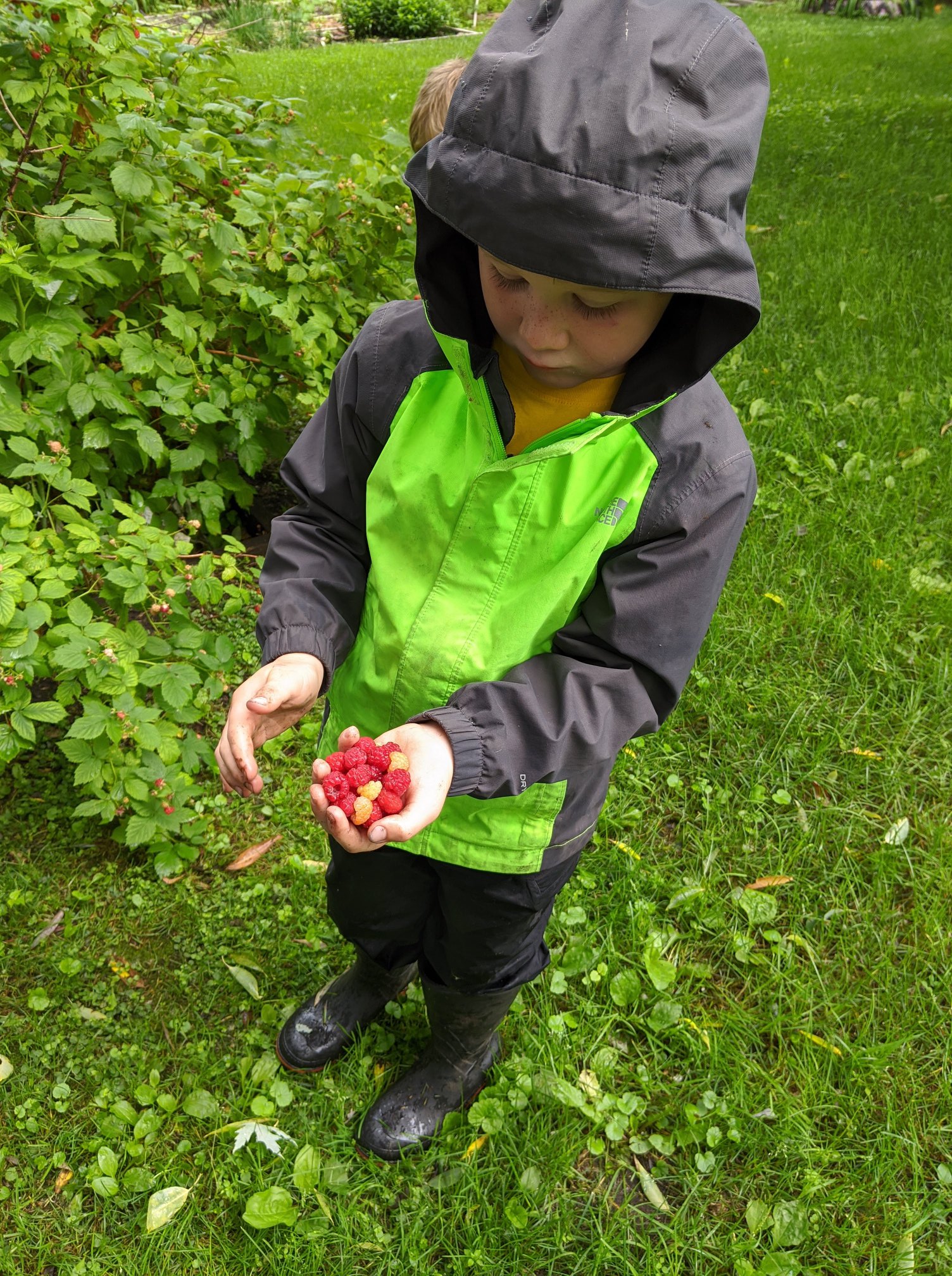Summer is all around us at the nature center. Birds are singing, turtles are basking, and wildflowers are blooming. But perhaps the sweetest part of summer is the delicious berries waiting to be snacked on as you wander the trails. Late June into July is peak season—and yes, they really are berry delicious!
Not all wild berries are edible—in fact, most are not. Luckily, the berries that are safe for our bellies are relatively easy to identify. Let's learn about a few of our favorite wild fruits and which berries to bypass.

Left: Gray dogwood berries. Right: Honeysuckle berries.
Their distinct, round shape are one sign they're not safe for human consumption.
When foraging for edible berries, pay close attention to two key characteristics: shape and color. As a general rule, round berries that are red or white are often not safe to eat. Berries are abundant this time of year, and some may look tempting—but don’t be fooled. Gray dogwood is one plant to avoid. Its white berries aren’t highly toxic, but they’re extremely bitter and can cause nausea and diarrhea. Honeysuckle is another; its bright red berries are toxic to humans.
Many blue and black berries should also be avoided, like common buckthorn. These dark blue to nearly black berries are found almost everywhere. This invasive plant spreads easily, thanks in part to its berries, which cause diarrhea in humans. One student claimed it only took seven berries to regret that snack!

Black-capped raspberries in varying stages of ripeness on a raspberry bush. The berries turn from green to red and finally to dark purple-black when ripe.
Now for the fun part—the berries we can eat! Minnesota is home to plenty of tasty wild berries, including both red and black-capped raspberries. The red ones look just like store-bought raspberries, while the black-capped variety is often mistaken for blackberries, but they’re usually sweeter.

Mulberries ripening on a mulberry tree, a tree found at Dodge Nature Center's Main Property in West St. Paul.
Both have the familiar thimble shape made up of small bumps, known as aggregate fruits—a group that includes raspberries, blackberries, and mulberries. In North America, only two aggregate fruits are toxic: jack-in-the-pulpit and goldenseal. So generally, if it looks like a raspberry, it’s probably safe to eat.
When it comes to harvesting wild berries, the best rule is to take only what you’ll eat in one sitting. We’re not the only ones who love these delicious fruits—birds and mammals depend on them, too. Sharing the bounty ensures there’s enough for everyone, human and wildlife alike.

A preschool student holds a handful of freshly picked raspberries.
Contributing author: Naturalist Michael Harrison
From the Trails is published monthly in our news & activities emails. Join our email list here.